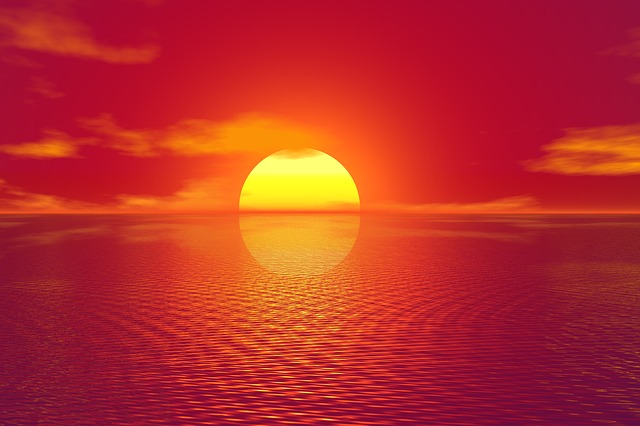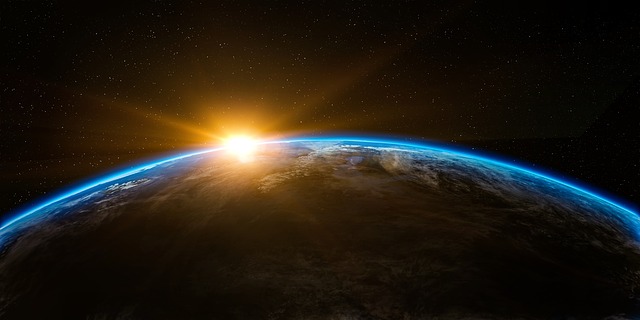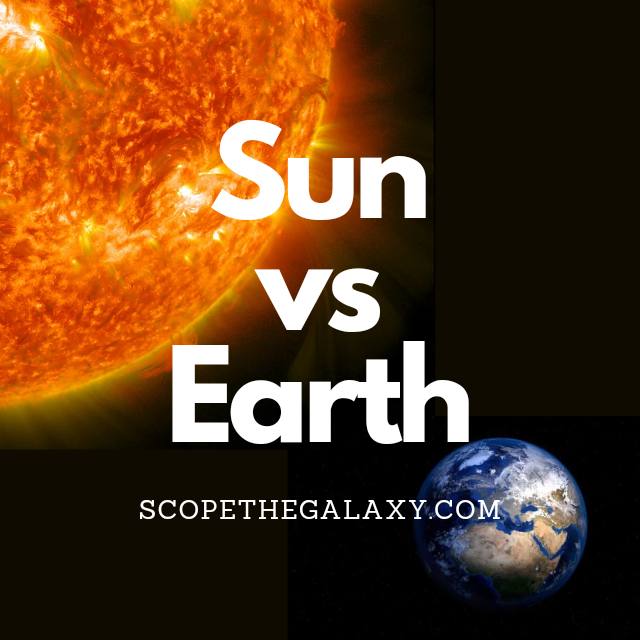*This post may contain affiliate links. This means we may make a commission if you purchase an item using one of our links*
The main differences between the Sun and Earth would be that the Sun is a yellow dwarf main-sequence star that is 1.39 million km in diameter that is located at the center of our solar system, with the ability to produce energy via nuclear fusion whilst Earth is the 3rd farthest terrestrial planet from the Sun that is able to harbor life as a result of its ideal distance from the Sun and abundance of water supply.
There are various other differences between these two celestial entities so continue reading if you want a more thorough breakdown on the Sun and Earth.
What Is The Sun?
Table of Contents

The Sun is the bright, celestial entity at the center of our solar system and is also a star that falls under the G type main sequence star bracket (also called a yellow dwarfs), all of which are medium sized stars that tend to be around 0.84 – 1.15 solar masses.
Our Sun is 1 solar mass, making it a medium sized medium star. It’s also on the brighter side for a yellow dwarf, the color that it emits is white as opposed to the slightly yellow that less luminous yellow dwarfs would be.
Of course we still see the Sun as yellow or even red on Earth but, the reason for this significant color shift is because our atmosphere scatters and breaks up the photons that reach us, ultimately changing the true color of the light rays from white to the yellow, orange or red we see in our day to day.
As it is a star, the Sun will actively convert the hydrogen elements at its core into helium, through a process called nuclear fusion.
Nuclear fusion is the reason why it generates light and produces the energy we receive, helping us power machinery, technology, grow crops so on and so forth.
The process of nuclear fusion also affects how hot our star burns, allowing the sun to hit temperatures around 6000°C on a daily basis. This will be the case for another 4.5 – 5 billion years until it’s unable to convert hydrogen into helium.
Once hydrogen cannot be converted, an imbalance between the inward and outward forces keeping the Sun together will occur, causing an imbalance which would result in our Sun bloating up many many times its current size.
When this happens it will enter its red giant phase, where it’ll be around 256 times larger than it is now.
This phase will last for around a billion years until it sheds it mass through a process called planetary nebula, leaving behind only a dead white dwarf remnant.
What Is the Planet Earth?

Our home planet Earth is the 3rd farthest planet from the Sun, made up of a mixture of water and solid rock like objects, and is the only entity in our solar system known to allow intelligent life forms like ourselves to exist.
Earth’s distance of 152 million km from the Sun has allowed it to remain within the goldilocks zone and as a result, the planet has been able to thrive for millions of years. It orbits the Sun in a circular pattern, much like all the other planets, has only one natural satellite which would be the Moon and is a terrestrial planet to boot.
In regards to its diameter, Earth is the 5th largest planet with a diameter 12,742km.
Earth’s temperature ranges based on the region you’re located where it can be from as low as -94 degrees Celsius in Antarctica to as high as 50 – 55 degrees Celsius in Tunisia.
As for the planets composition, it consists of the crust, the mantle, the outer core and the inner core, where the inner core is the hottest element within the Earth reaching temperature in excess of 5,200 degrees Celsius.
In regards to some of its most unique features, Earth is around 71% water, has an atmosphere consisting mostly of oxygen and nitrogen that is also made up of 5 main layers, with the highest to lowest being the troposphere, stratosphere, mesosphere, thermosphere and exosphere.
A day on Earth is 24 hours and an orbital cycle around the Sun takes 365 days to complete. It’s axial tilt is more distinct at 23.5 degrees to the right.
How Are The Sun And Earth Similar?
Although the Sun and Earth don’t share too much in common, they do have the odd few features similarities, which in this case includes the following:
- Both are spherical in shape.
- Both have a hotter central core.
- Both have objects orbiting them.
- Both are part of the same solar system.
Differences Between The Sun And Earth
In regards to the differences between the two, they include the following:
- The Sun is 1.39 million km in diameters whilst Earth has a diameter of 12,742km.
- Earth is far cooler than the Sun where it averages 13.9 degrees Celsius as opposed to the Sun which can be around 6,000 degrees Celsius.
- Earth has one natural satellite whilst the Sun has the entire solar system orbiting it.
- The Sun has a solar mass of 1 or in kilograms 1.989 × 10^30 kg whilst the Earth’s mass is 5.972 × 10^24 kg.
- In regards to their core temperatures, Earth’s is 5,200 degrees Celsius whilst the Sun’s is 15 million degrees Celsius.
- The Sun is many magnitudes brighter than Earth and is also the brightest entity in our solar system.
- The Earth takes 24.5 – 34 days to complete an axial orbit whilst Earth does it in 24 hours.
- Earth’s axial tilt is 23.5 degrees whereas the Sun’s tilt is 7.25 degrees.
- Earth has a magnetic field strength of around 0.25 – 0.65 gauss whilst the Sun’s is 1 gauss.
- The Sun’s gravity is 274 m/s² whereas Earth’s gravity is 9.807 m/s².
- It takes Earth 365 days to orbit the Sun.
- The Sun will eventually burn out and die leaving behind a white dwarf remnant whilst Earth has no set lifespan but, may be caught up in the Sun’s expansion billions of years from now.
Summary
The Sun and Earth are completely different entities from one another so it makes sense that they would differ in as many ways as they do, even if they are part of the same solar system.
So taking into account the differences in size, temperature, gravitational strength, magnetic strength and beyond, the Sun and Earth don’t have very much in common at all.

